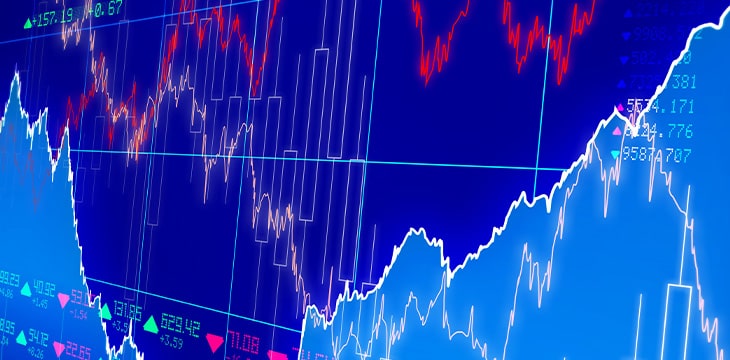|
Getting your Trinity Audio player ready...
|
In this article, Marquez Comelab discusses the primary force driving the price of Bitcoin, on which users have an influence.
Have you ever wondered what determines the price of Bitcoin?[1] In this article, I will discuss the major force that drives the price of Bitcoin, and fortunately, it is something you have the power to influence.
Let’s start with basic economic theory. The price of anything in a free market is determined by how much of it is available and how much it is demanded by those who want it. On the left is a typical representation of a demand curve for any item in a market. The right shows the supply curve of Bitcoin SV.
Let’s take a closer look at the demand curve first.
When I say Bitcoin, I only have the true, original Bitcoin in mind: Bitcoin Satoshi Vision (BSV). I specifically exclude BTC and BCH. I only refer to BSV because it is the same Bitcoin that was described in the original Bitcoin white paper and the only implementation of Bitcoin that uses the original Bitcoin protocol—the one designed to be a global electronic cash system.
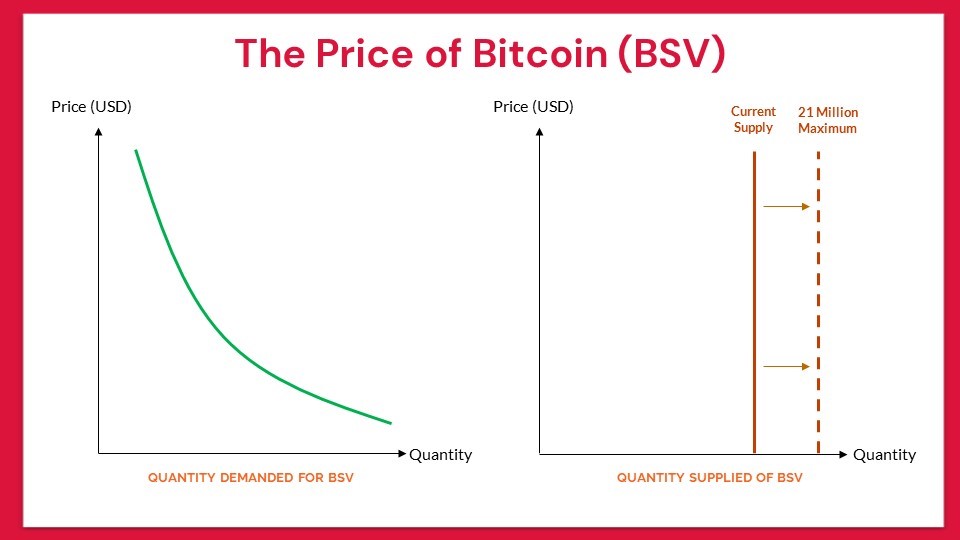
A typical demand curve for anything in a free market—drawn—can be a declining line. Note that on the vertical scale (the Y-axis) is the price of Bitcoin in U.S. dollars. The horizontal axis (the X-axis) is Quantity Demanded.
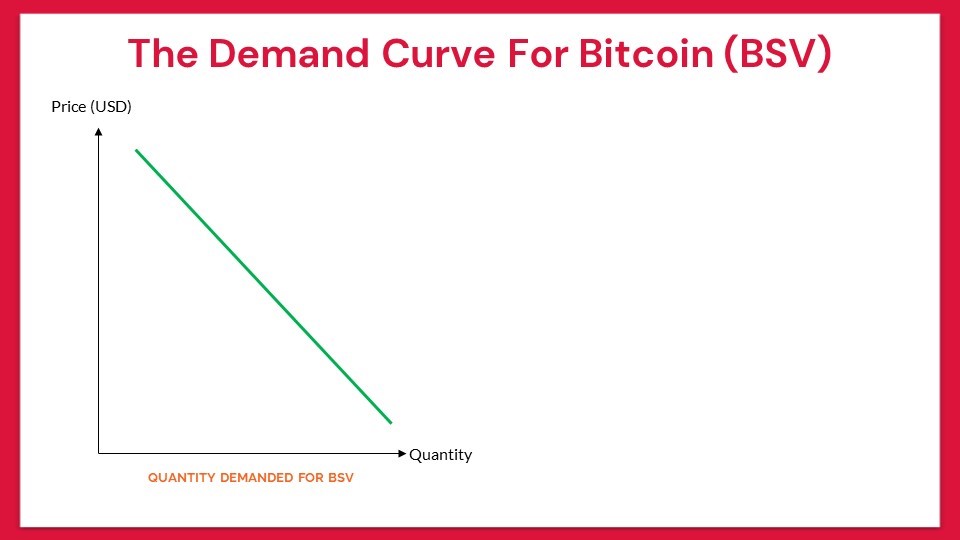
Actual demand curves were derived by surveying the quantity people would buy of particular items at different price points and plotting them on a graph.
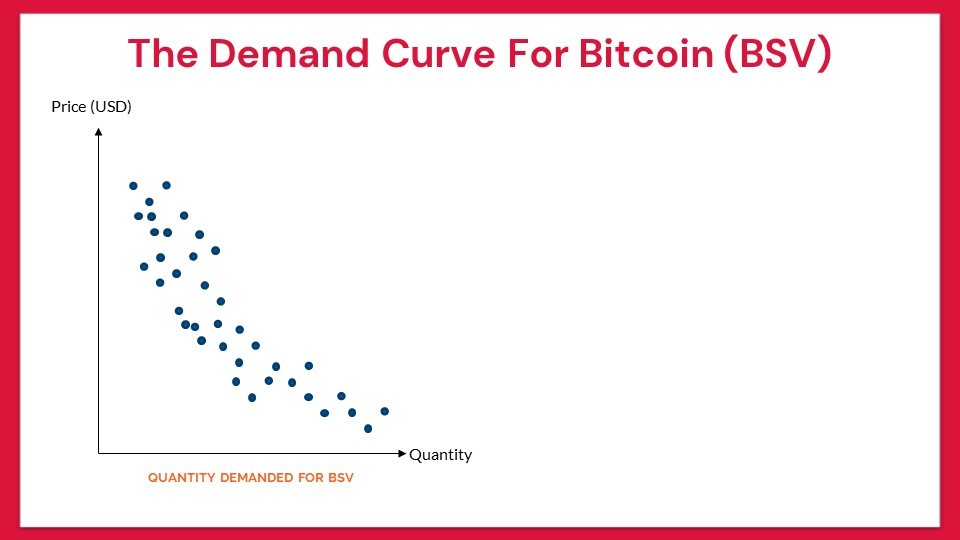
You take the average and get the demand curve, which tends to look like a curve instead of a straight line.

Looking at this chart, therefore, we can say that at a high price, fewer and fewer people are willing and able to buy Bitcoin. At a lower price, many more people can afford and buy Bitcoin.
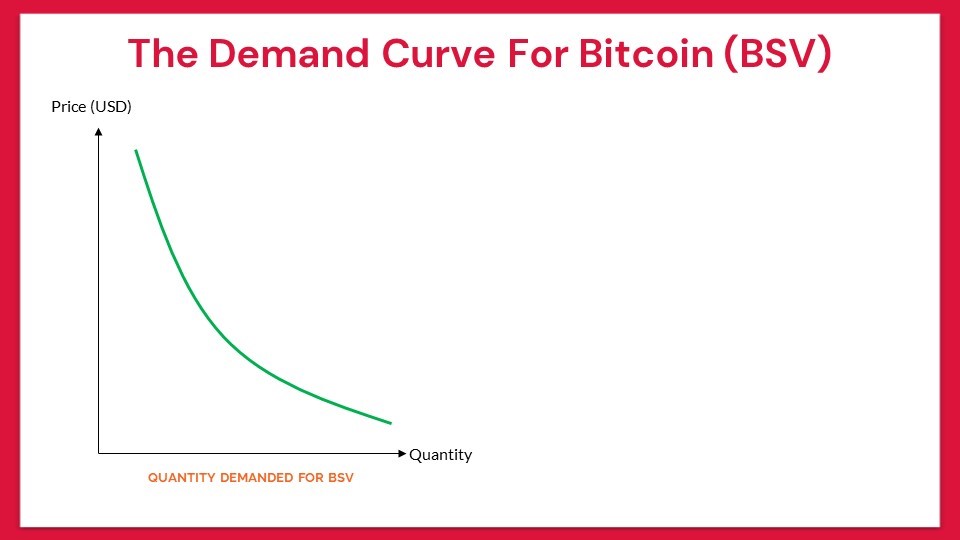
When more and more people use Bitcoin, the demand for it increases. This is represented by the demand curve shifting to the right.
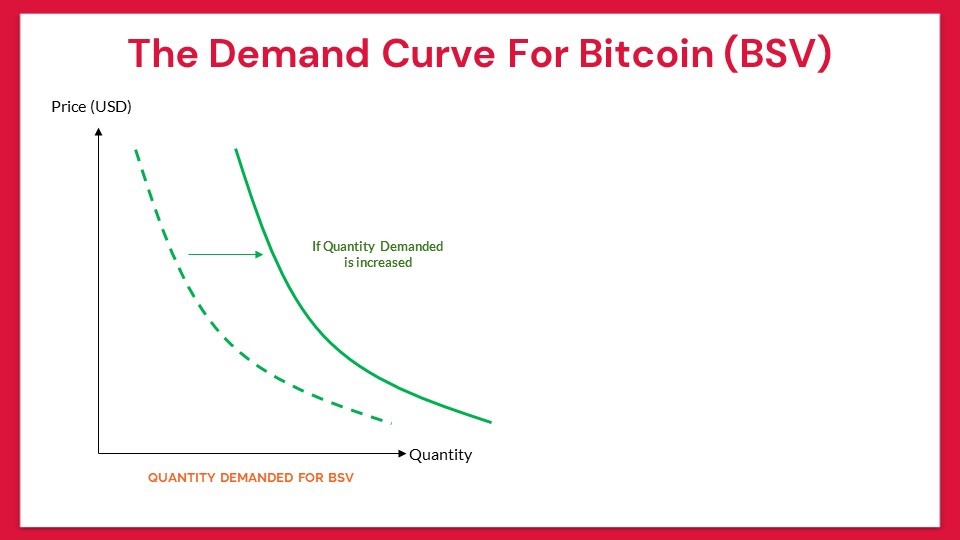
If less people use it, its demand curve shifts to the left.
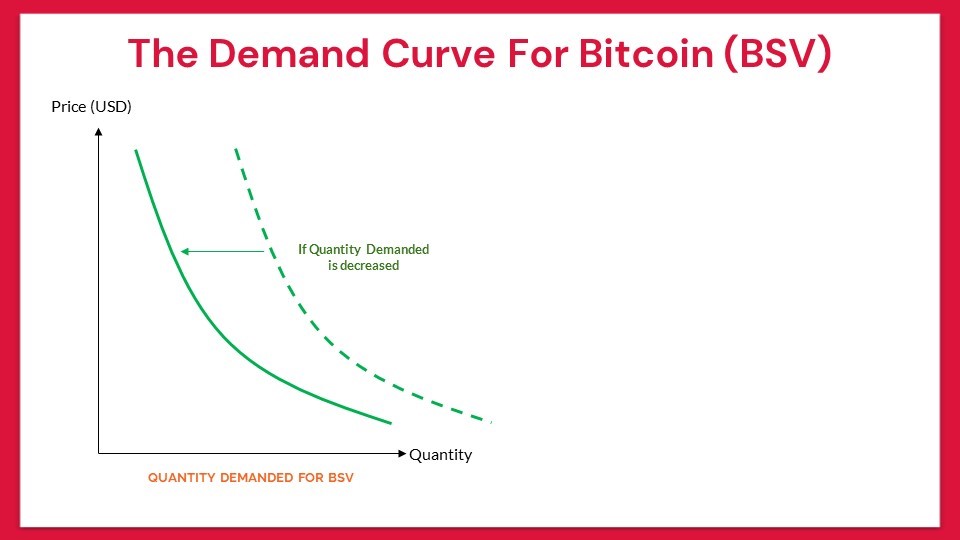
Let’s now look at the Supply of Bitcoin.
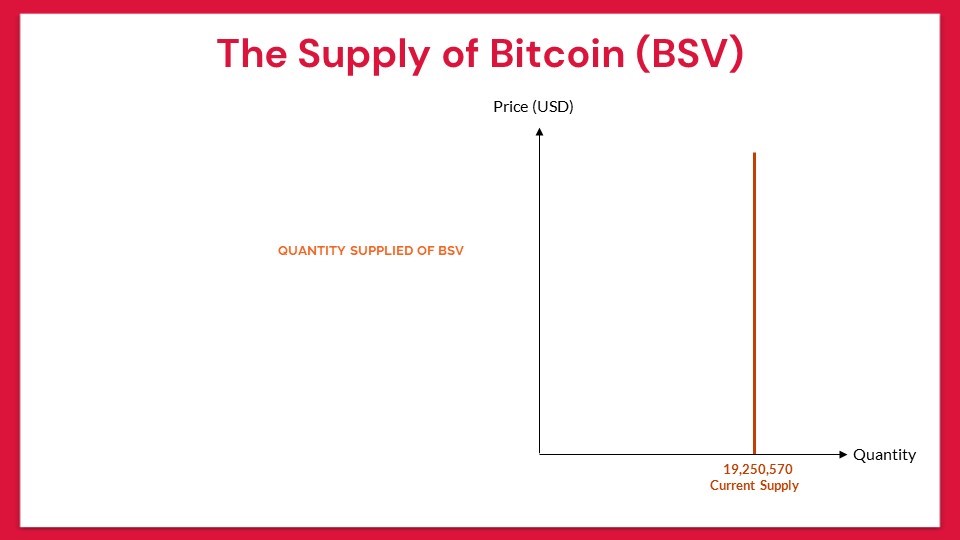
Just before Bitcoin was released in 2009, the supply of Bitcoin was zero.
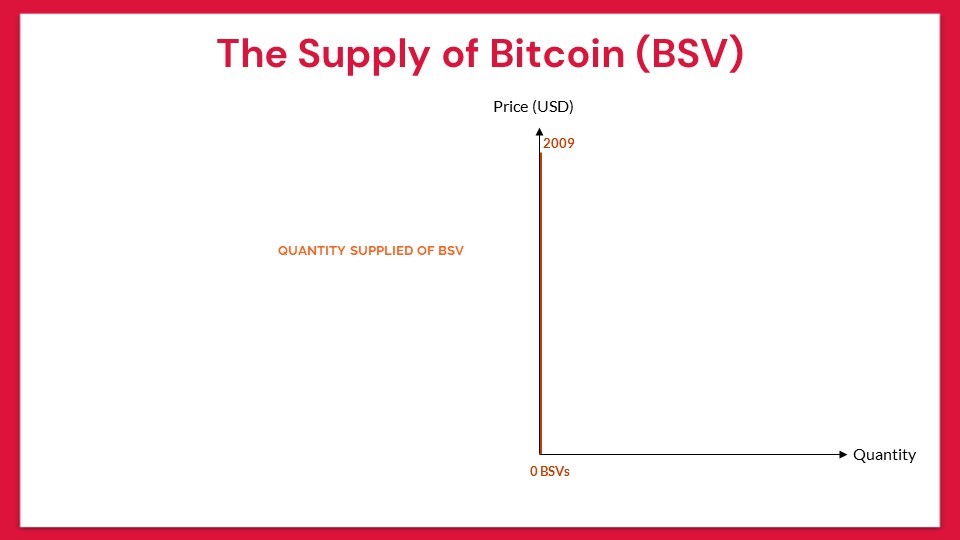
After Bitcoin’s first release, bitcoins were distributed with every mined block added to the Bitcoin blockchain. About 19 million BSVs are already in circulation at the time of writing.
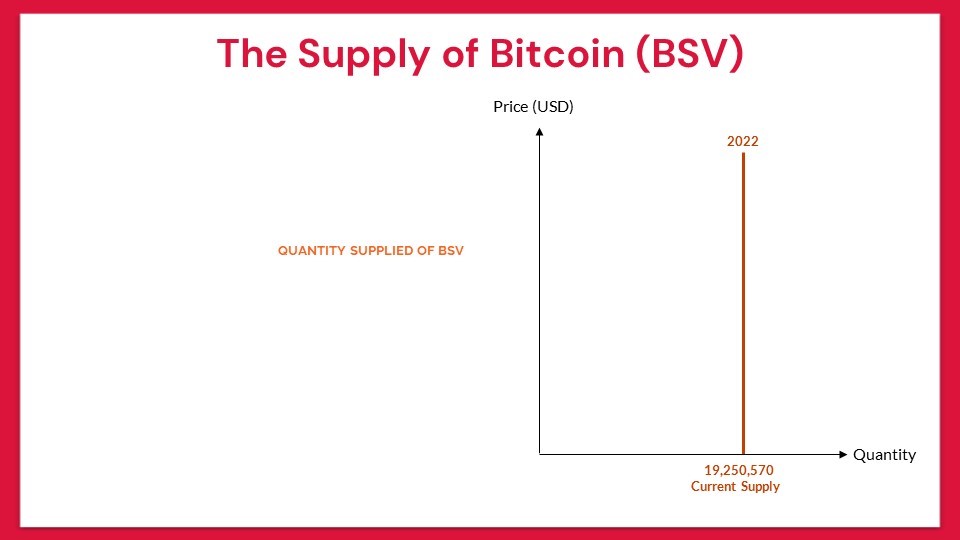
If Bitcoin is still around in 2140, the last Bitcoin will have been distributed, and all 21 million Bitcoins will be circulating in the global economy.
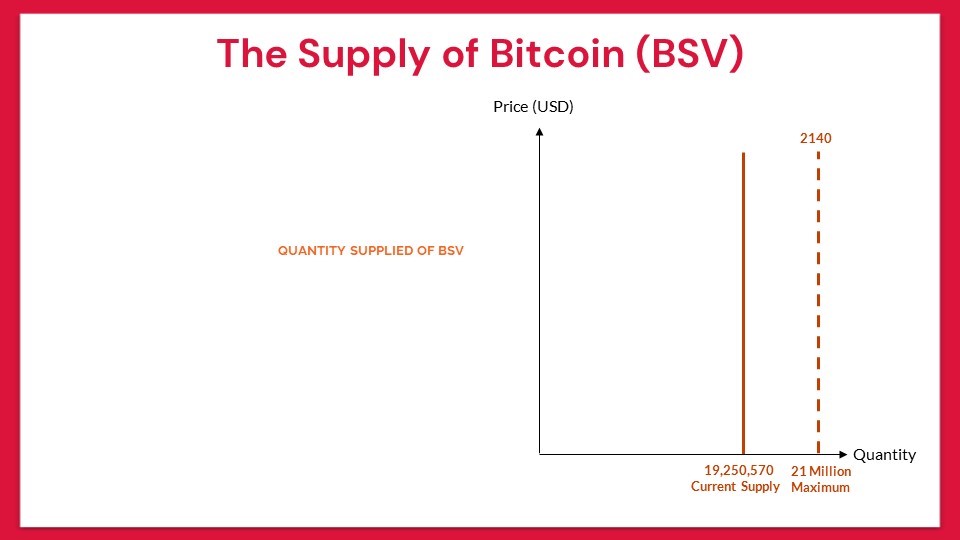
Side-by-side, this is what the demand and supply curves for Bitcoin look like. Since they have the same X and Y axis, we can draw them on the same chart.
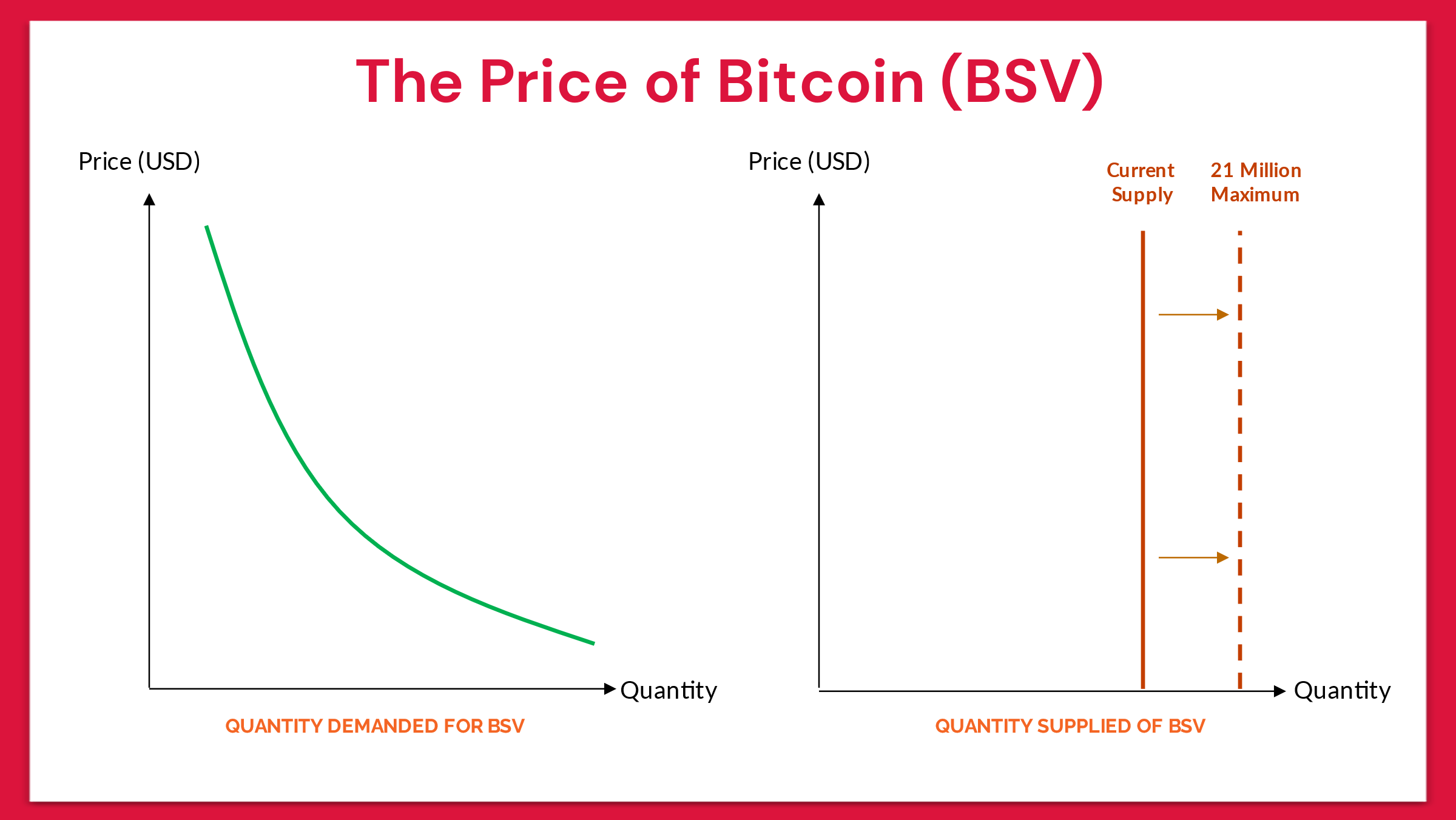
When we do this, we see that the quantity demanded by Bitcoin intersects its supply. Where they intersect is called the equilibrium price. Today, we know the equilibrium price is around US$50 because that is its current market price.
Let’s see what happens if more people trade Bitcoin every day.
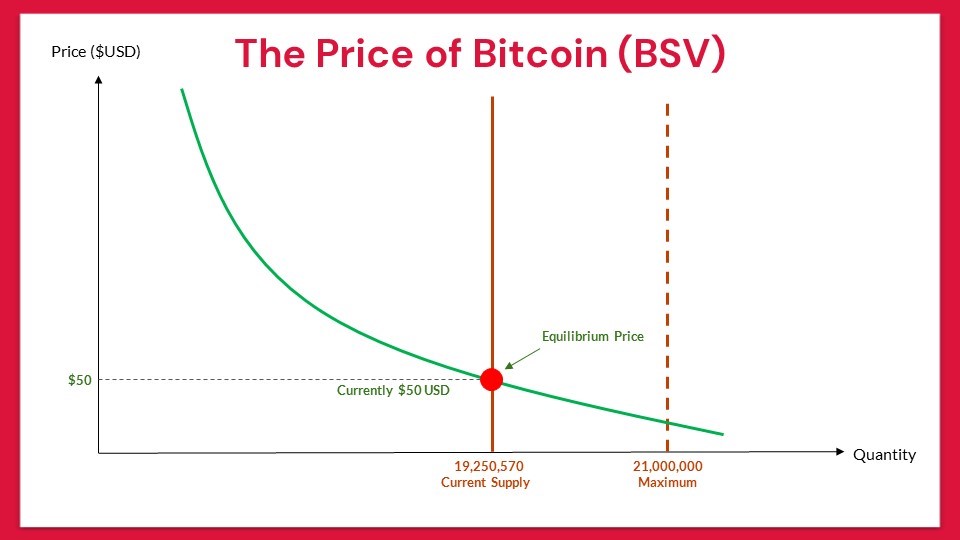
As the demand for BSVs increases, its demand curve shifts right, and the price goes up. Why? Because more and more people want and need it. This means those willing to acquire it will bid higher and higher prices. People selling BSVs prefer and accept a higher price for their Bitcoins.
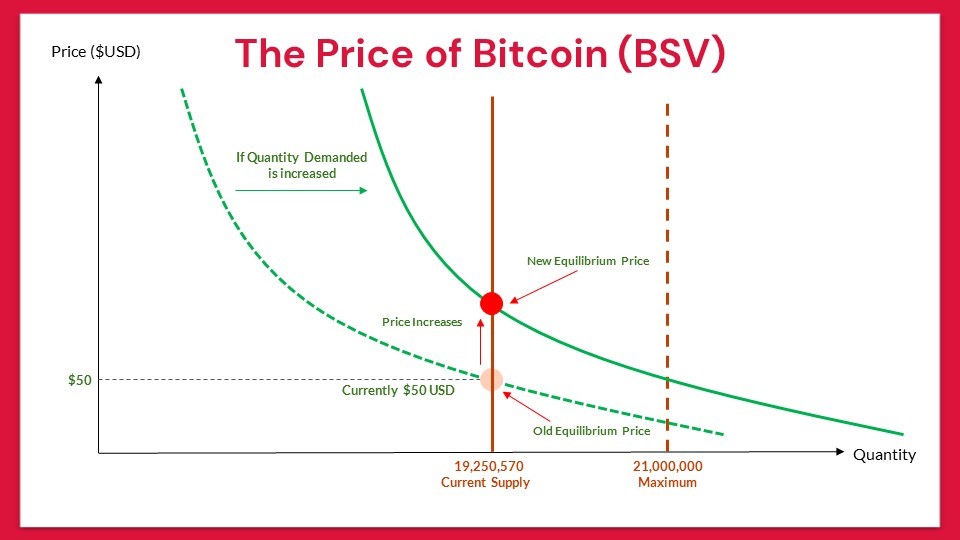
If even more people want to acquire Bitcoin, the buying pressure continues, and the price increases even higher.
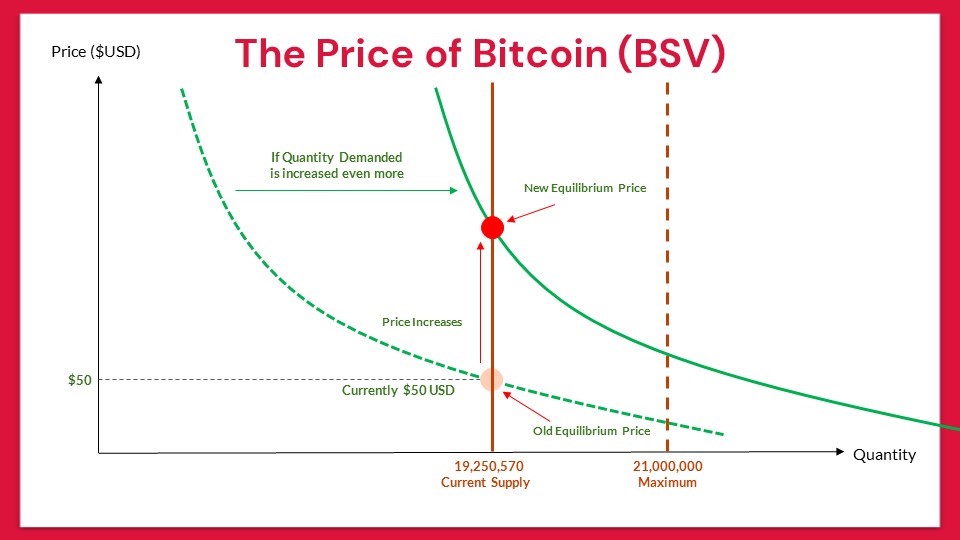
The more people use Bitcoin daily, the more the demand curve shifts to the right, and the equilibrium price shifts even higher.
For Bitcoin BSV to maintain a steady, sustained price increase, demand for it must increase steadily and consistently.

Currently, BTC and all digital currencies are experiencing wild price fluctuations. This is attributed to the fact that most transactions have been motivated by gambling and trading. The price of Bitcoin fluctuates depending on the fear and greed of people. If there’s good news about Bitcoin, people think the price of Bitcoin will go up, and they should buy it as soon as possible. Plus, they are willing to pay high prices to acquire them.
Alternatively, if they hear bad news, people become fearful and start selling at whatever price they can, depending on the worst-case scenarios they imagine. As a result, the price of BTC and digital currencies rises quickly and crashes spectacularly within mere days or hours.
However, when people begin to price the items they need for their daily lives in Bitcoin, then suddenly, the value of Bitcoin is tied to the prices of goods and services in the real economy.
What types of transactions are conducive to a steady, stable price increase of Bitcoin?
Transactions that lead to stable and consistent price increases are regular and frequent transactions that are important, useful, and/or necessary. Examples of such transactions are when you do your grocery shopping every week; when you get a haircut every month; when you pay your bus or train fares to travel to and from work every day, and when you pay your rent, your water, or power bill monthly.
When people begin to use Bitcoin for these transactions, there is more pressure for the price of Bitcoin to become less volatile. People will begin transacting Bitcoin for around the same value it was trading the day before for convenience and practicality. If you paid a tenth of a Bitcoin for a bottle of milk yesterday, it would be easier for the buyer and seller to keep milk at the same price in Bitcoin today rather than having to re-negotiate every day. This is how the price of Bitcoin will stabilize. It will fluctuate as market prices do, but the oscillations will narrow.
One way to understand which types of transactions are likely to lead to a more stable and sustained price rise of Bitcoin BSV is to consider Maslow’s hierarchy of needs. An American Psychologist named Abraham Maslow developed a theory of what people need. He identified five needs and demonstrated them to represent a pyramid.
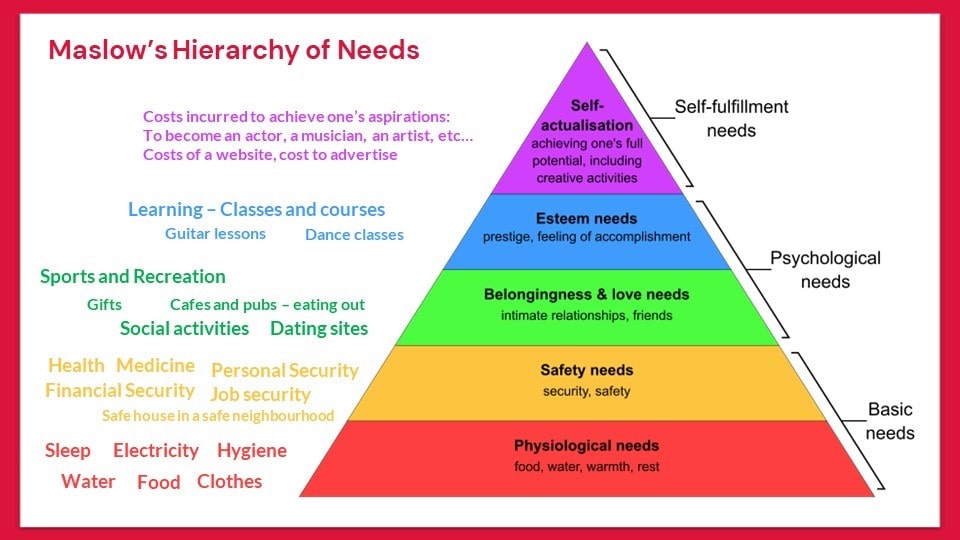
After our physiological needs are met, we must ensure financial and personal security. We want to have a steady source of income, live in a safe house in a safe neighborhood, and have access to medical and hospital facilities in case we or any of our loved ones become ill.
The third and fourth layers of the pyramid refer to our emotional and psychological needs. We want to hang out with family and friends, do social activities, eat out, buy each other gifts, and do sports and other forms of recreation with other people. After these needs are met, we dare to dream and plot goals to reach our ambitions, whether to hone our artistic or creative talents or become one of the best in whatever field our interests lie.
If more people use Bitcoin to serve more fundamental needs, we can expect the price of Bitcoin to steadily and consistently go up as its value begins to represent tangible goods and services thousands of people need and use every day.
No blockchain or digital currency projects can handle the number of transactions needed to facilitate the volume of the transactions necessary to support people transacting in practical and valuable ways. BTC—the blockchain which many incorrectly assume is Bitcoin—is left crippled with a tiny 1MB block and can only handle seven transactions per second.
It wasn’t until Satoshi Nakamoto, Craig Wright, his friend Stefan Matthews and Calvin Ayre, and their various teams and companies worked to restore the original Bitcoin protocol in BSV that they gave the world an implementation of Bitcoin capable of much higher transaction volumes. Today, the Bitcoin Satoshi Vision electronic cash system can handle as much as 100,000 transactions per second, surpassing what Visa and many other cryptocurrency projects can.
Bitcoin as BSV is ready to serve individuals, businesses, countries, and the entire world to use its many capabilities as an electronic cash system, capable of sending millions of payments, especially micropayments, worldwide much more cheaply and quickly than ever before.
Finally, Bitcoin SV can support the types and volumes of transactions that are important and useful to people’s lives. If you want to be part of this transformation, get a BSV or two, and help build its economy.
You do not have to be in business, and you do not need to be an entrepreneur. You do not need to be a programmer nor do anything more special than what you are doing now. You can help yourself by as simple as using true Bitcoins—BSVs—to buy and exchange for the things you normally need to live, work, and earn a living.
***
NOTES:
[1] When I say Bitcoin, I only have the true, original Bitcoin in mind: Bitcoin Satoshi Vision (BSV). I specifically exclude BTC and BCH. I only refer to BSV because it is the same Bitcoin that was described in the original Bitcoin white paper and the only implementation of Bitcoin that uses the original Bitcoin protocol—the one designed to be a global electronic cash system.
[2] The image of the pyramid came from Androidmarsexpress, licensed under Creative Commons, https://en.wikipedia.org/wiki/Maslow%27s_hierarchy_of_needs#/media/File:Maslow’s_Hierarchy_of_Needs2.svg (Last accessed 16/12/2022).

 12-12-2025
12-12-2025 
